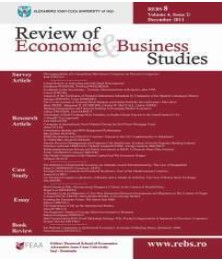FROM FEARFUL TO TRUSTFUL – HOW PERCEIVED RISK DIMENSIONS IN E-COMMERCE DIFFERENTIATE BETWEEN CONSUMERS
FROM FEARFUL TO TRUSTFUL – HOW PERCEIVED RISK DIMENSIONS IN E-COMMERCE DIFFERENTIATE BETWEEN CONSUMERS
Author(s): Patricea Elena BerteaSubject(s): Business Economy / Management, Behaviorism, ICT Information and Communications Technologies, Socio-Economic Research
Published by: Editura Universităţii »Alexandru Ioan Cuza« din Iaşi
Keywords: perceived risk; online buying intention; risk profiles; segmentation;
Summary/Abstract: The need to segment the market for e-commerce in terms of risk is without doubt of great importance, from a theoretical, but mainly from a managerial point of view. This is why the present study derives a typology of consumers based on six dimensions of perceived risk in online shopping (product, financial, delivery, privacy, social and psychological) and links the resulting risk profiles to several outcome variables. The study is one of the few that offers a new perspective on perceived risk, identifying a two-factor structure: situational risk and individual risk. These two factors were used in a cluster analysis, where four segments were identified: careful consumers, fearful consumers, suspicious consumers and trustful consumers. To offer valuable information for practitioners, these segments are compared in terms of intentions to buy online, online shopping frequency, trust in e-commerce, perceived ease of use, and perceived usefulness of e-commerce. One interesting finding is that suspicious and trustful consumers do not differ in terms of buying intention, even though the difference between them in terms of perceived risk is significant. Implications and further research directions are identified.
Journal: Review of Economic and Business Studies (REBS)
- Issue Year: 2015
- Issue No: 15
- Page Range: 45-54
- Page Count: 10
- Language: English

